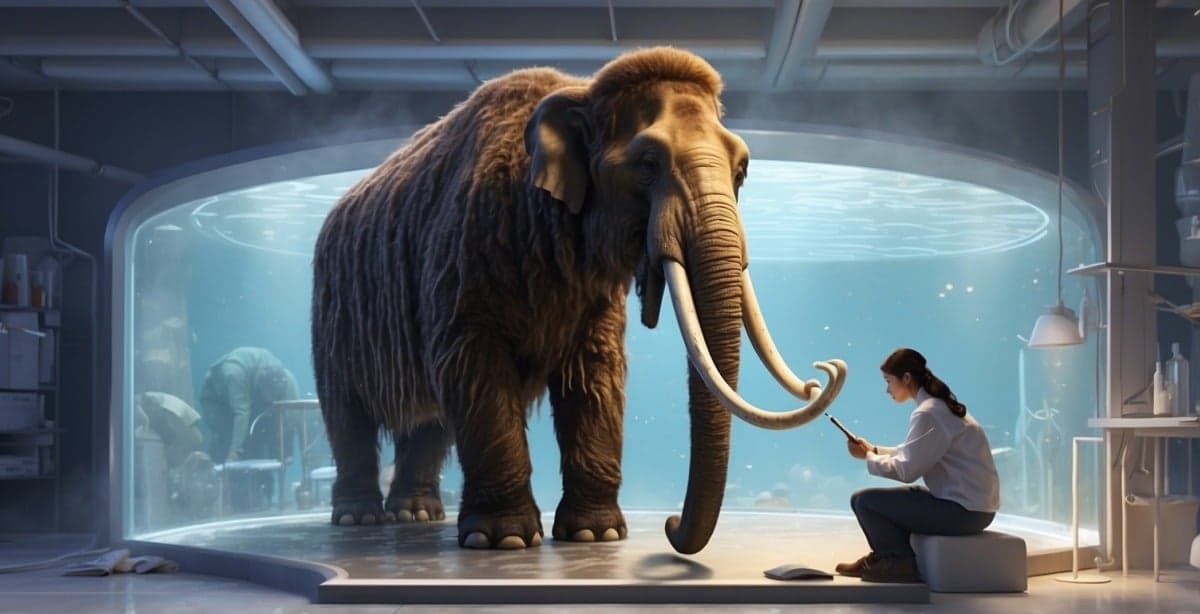Colossal Biosciences: 10 Key Things You Must Know

Overview
Colossal Biosciences stands at the forefront of a groundbreaking field known as de-extinction, aiming to bring back long-gone species using cutting-edge genetic technologies. Co-founded by Ben Lamm, a serial tech entrepreneur, and George Church, a renowned geneticist, this biotechnology company was established in 2021. It quickly gained notoriety for ambitious plans to resurrect the woolly mammoth and other extinct species like the thylacine and the dodo. As you read on, discover ten intriguing insights into this innovative company that’s turning science fiction into science fact.
1. Genesis of Colossal Biosciences
Founded in Dallas, Texas, Colossal Biosciences originated from George Church's vision to use genetic engineering to reintroduce extinct species. His previous work on CRISPR technology laid the groundwork for what would become the company’s de-extinction toolkit. Ben Lamm joined forces with Church, bringing a tech entrepreneurial mindset to the venture and securing significant early-stage investments.
2. De-Extinction Projects
Colossal Biosciences is spearheading efforts to resurrect the woolly mammoth, with plans to produce hybrid calves by 2028. The company utilizes CRISPR to edit the DNA of Asian elephants, their closest living relatives, to incorporate mammoth genes necessary for surviving Arctic conditions. This pioneering project is a key step in exploring how extinct species might contribute to modern ecosystems and combat climate change.
3. Scientific Backbone
The scientific endeavors at Colossal are underpinned by a robust team, including Chief Science Officer Beth Shapiro, an expert in ancient DNA. The company collaborates with numerous global scientists specializing in genomics, ecology, and developmental biology, ensuring a comprehensive approach to every de-extinction project.
4. CRISPR Technology
Central to Colossal’s innovation is CRISPR, a revolutionary gene-editing tool that enables precise modifications in the DNA of living organisms. The company employs this technology not just for de-extinction but also for conservation of current endangered species, showcasing its versatility and transformative potential in biotechnology.
5. Conservation Initiatives
Beyond de-extinction, Colossal is committed to conservation, using its genetic technologies to support existing species like the northern white rhino. The company has partnered with projects to create genetic diversity and improve reproductive techniques, linking its technological advances to real-world conservation efforts.
6. Financial Backing and Growth
As of January 2025, Colossal has raised a total of $435 million, including a recent $200 million Series C funding round. These investments support technological developments, team expansions, and an ever-growing list of target species for de-extinction, reinforcing the company’s stature as a biotech decacorn valued over $10 billion.
7. Partnerships and Global Influence
Colossal’s reach extends globally through collaborations with universities and conservation organizations. Key partnerships include the Vertebrate Genomes Project and initiatives with Baylor College of Medicine. These collaborations not only enhance biodiversity efforts but also advance scientific research capabilities worldwide.
8. The Dodo and Avian Projects
Adding to its mammoth and thylacine projects, Colossal has launched an Avian Genomics Group focused on the dodo. By reconstructing the complete DNA sequence using its closest living relative, the Nicobar pigeon, the company aims to revive characteristics of the dodo, demonstrating its commitment to a broad spectrum of species revival projects.
9. Ethical Considerations
The concept of de-extinction raises significant ethical questions, which Colossal addresses through its advisory board comprising bioethicists and scientists. The company aims to balance scientific ambition with ethical responsibility, fostering a dialogue on the long-term implications of resurrecting extinct species.
10. Future Prospects
Looking ahead, Colossal Biosciences envisions expanding its de-extinction portfolio to include other megafauna and critically endangered species. With its commitment to innovation, the company also plans to apply its technologies in enhancing human health and agriculture, reinforcing its broader vision of pioneering genetic engineering beyond species revival.
Conclusion
Colossal Biosciences embodies the dynamic intersection of science, technology, and conservation, charting new territories in genetic engineering. Its ambition not only captivates imaginations but also calls upon society to consider the role of humans in shaping future ecosystems. Whether viewed as a glimpse into a futuristic world or a pragmatic approach to biodiversity, Colossal's endeavors invite reflection on both present identities and potential future challenges.
References
- Colossal Biosciences Official Website
- Wikipedia Entry on Colossal Biosciences
- Business Wire on Series C Funding
- TechCrunch Article on Valuation
- The Hindu Article on Financing
- Colossal Biosciences LinkedIn Profile
- Dallas Innovates Coverage
- Fortune on Colossal Biosciences
- National Geographic's Overview on De-Extinction
- CNET Video Feature on Colossal's Mission